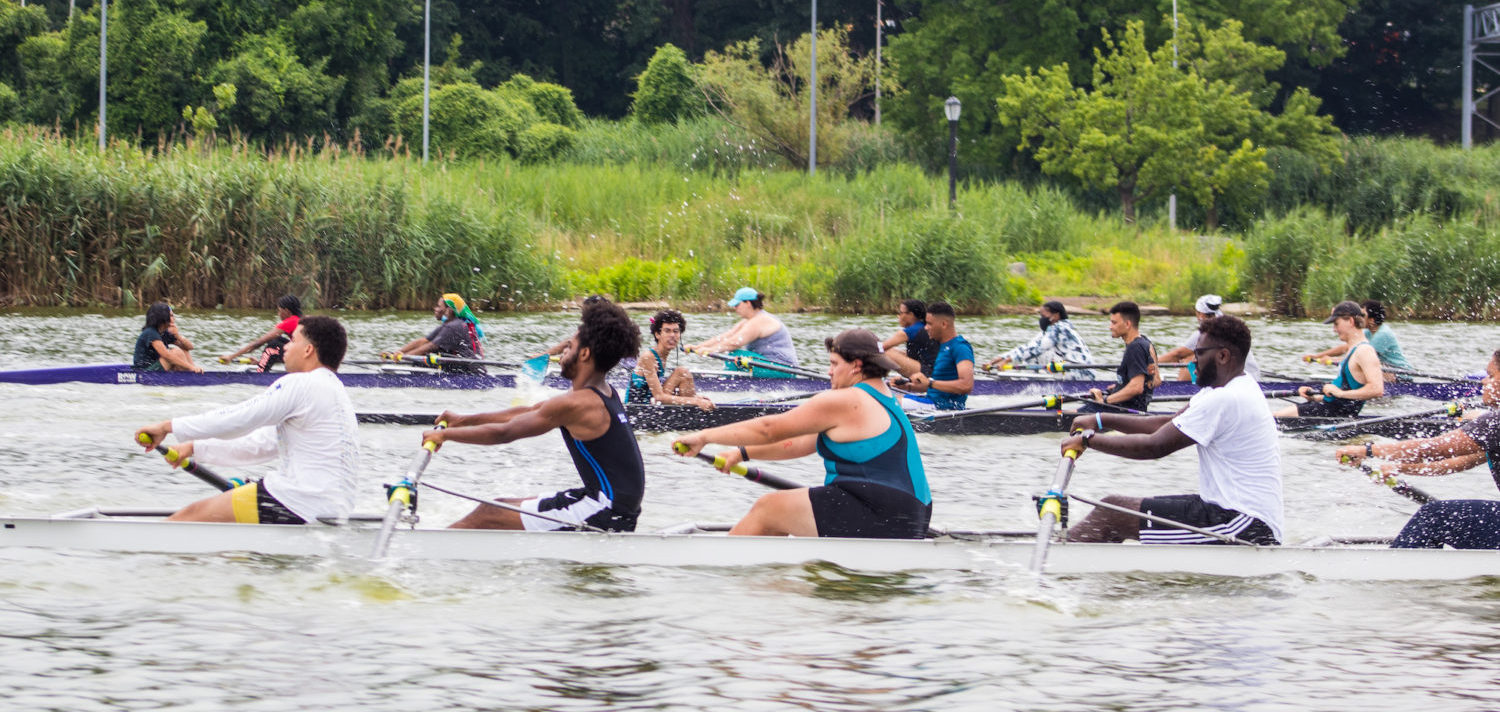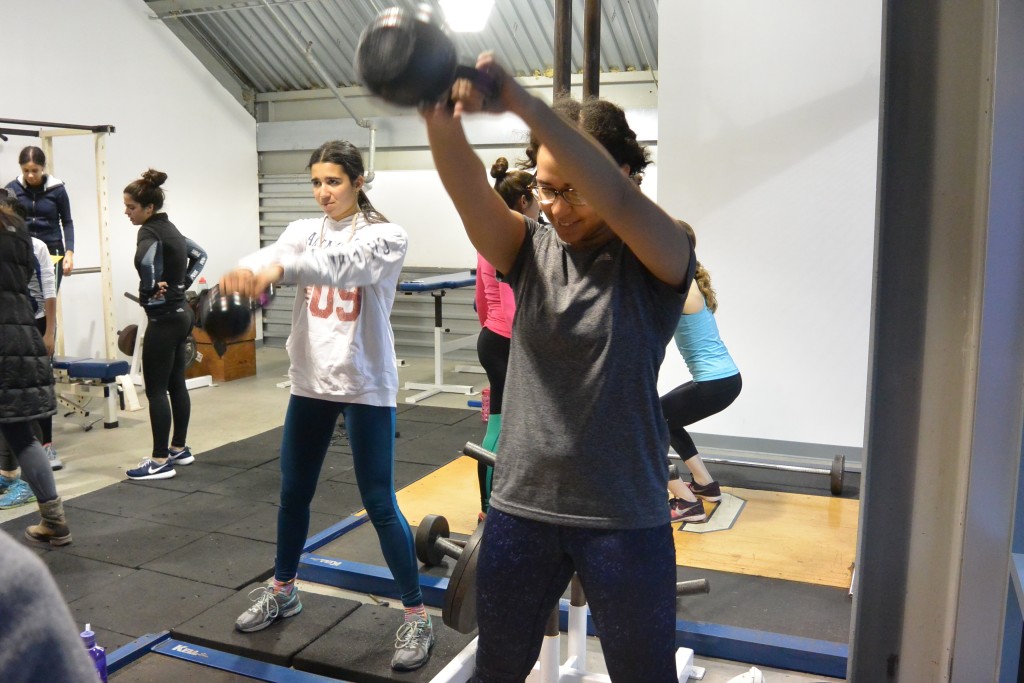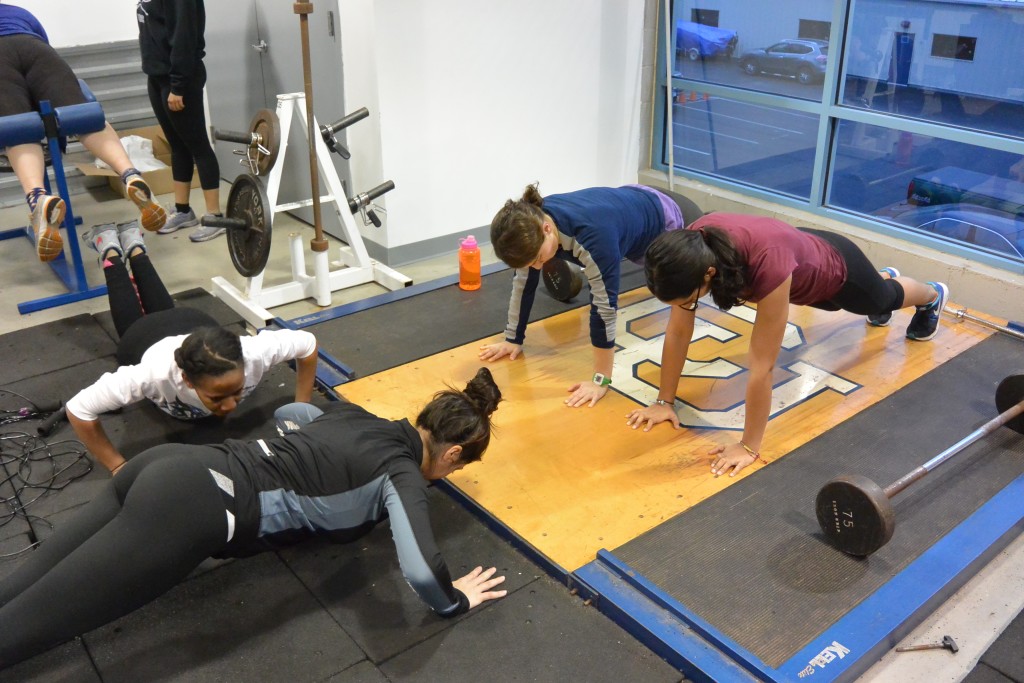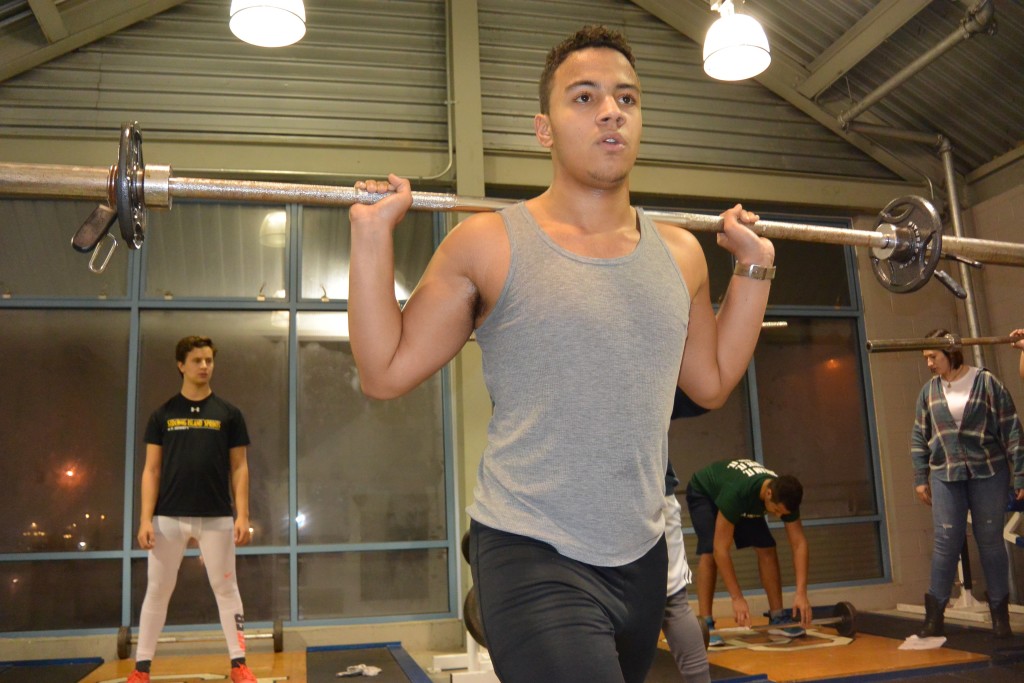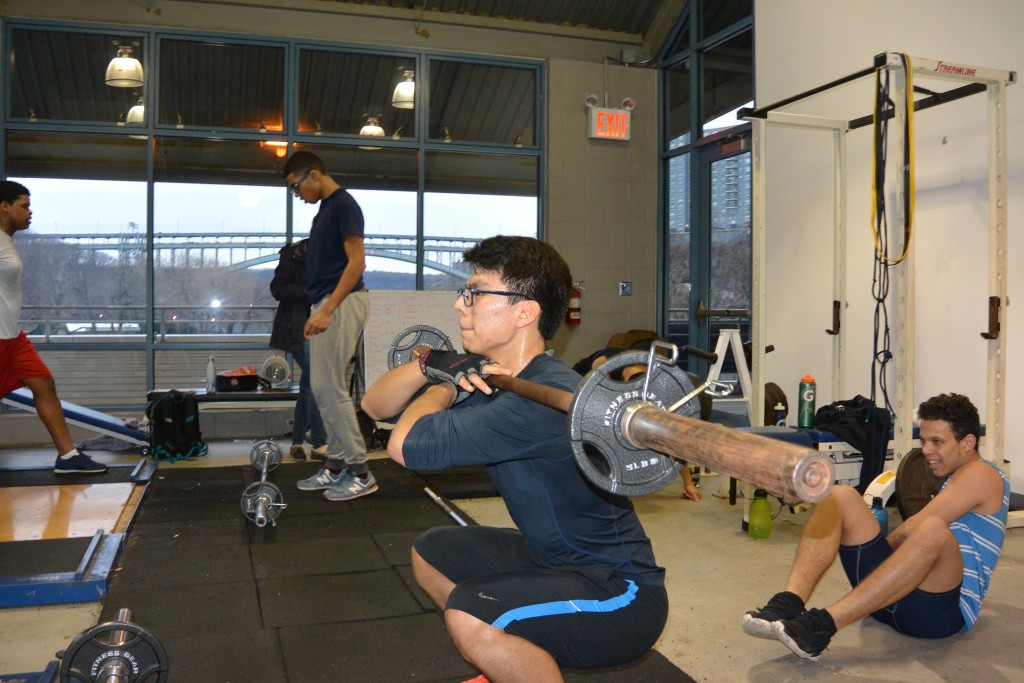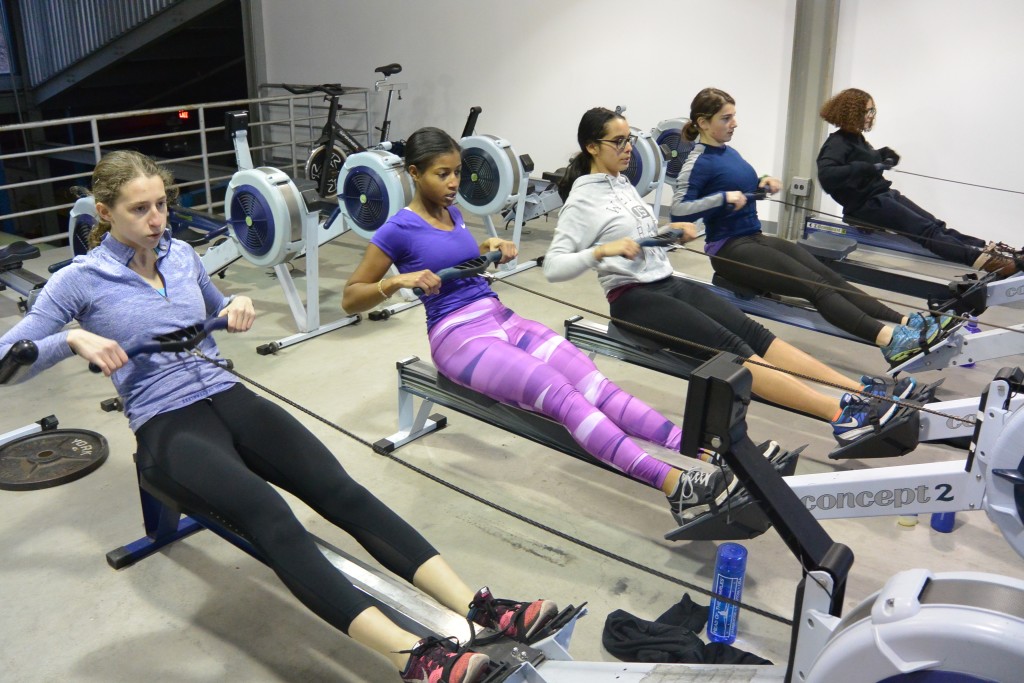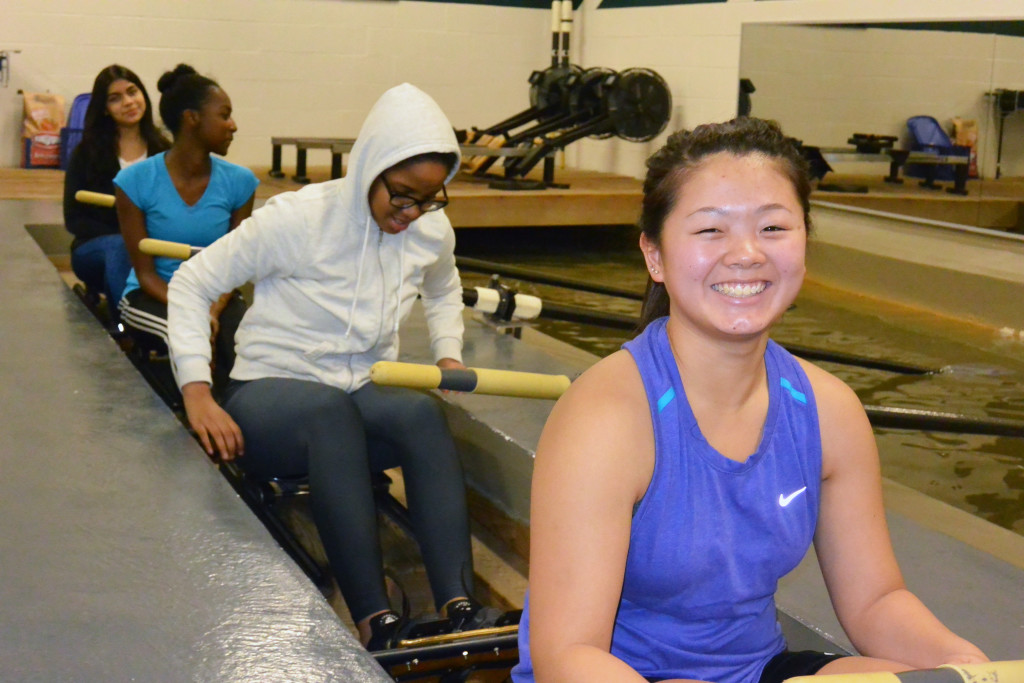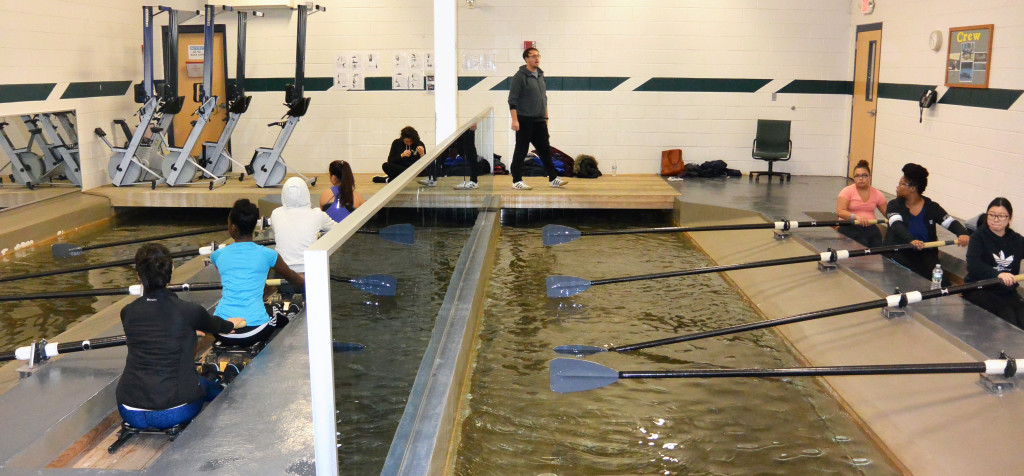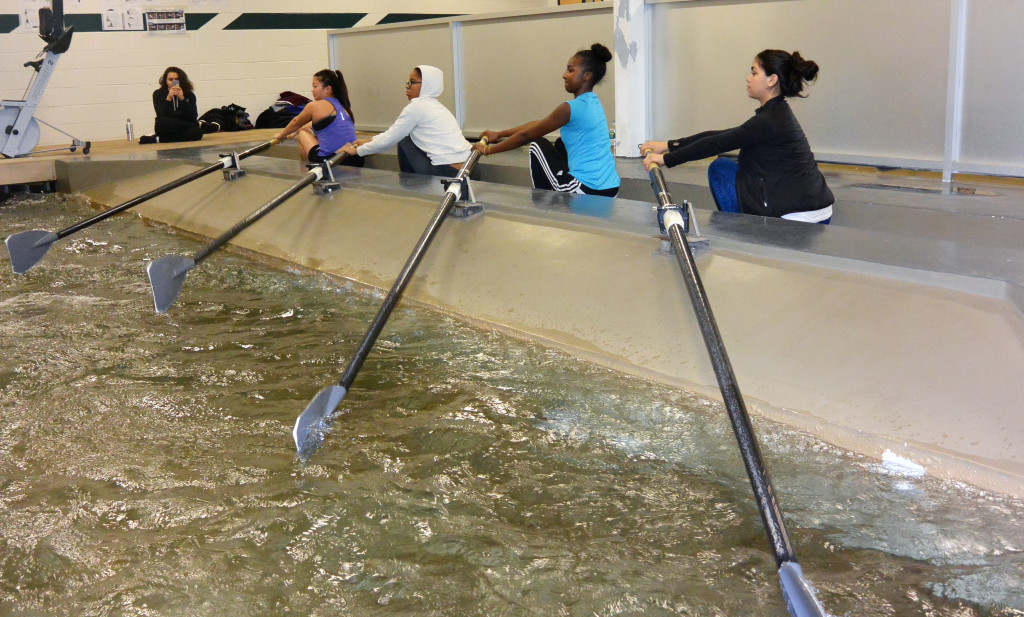by Ruby Lyon
It’s been said that rowing counteracts instant gratification – the work you put in today will not result in a win tomorrow. Unlike many other athletic options, rowing is also a year-round pursuit. Therefore, the winter season serves as an incredibly formative time for a team. However, with most of the season based around building strength, endurance, and fine tuning erg scores, it can be challenging to spend continuous days, weeks, and months pushing while never actually getting on the water. But like the classic story of the ant and the grasshopper, athletes who invest in their training during the cold months see the payoff in the spring racing season.
Since this season can feel monotonous, we make sure to keep it fun at Row New York. During the winter, we aren’t just on the ergs – we’re on the move. Our athletes are swimming, lifting, and experiencing the feeling of a real oar in their hands. At the same time, athletes are also learning how to become entrepreneurs, receiving homework help, and applying for financial student aid.
Here’s what the winter season looks like:
SWIMMING
Two at a time, Manhattan varsity team members make their way up and down the pool. They do this six times, non-stop. They then head to the deep end to tread water for five minutes. Proud kids emerge from the pool once the test is over. Upon successfully completing their swim tests, participants are cleared to row on the water. All Row New York student-athletes must successfully pass a swim test. For those who need to learn how to swim first, or for anyone who wants to improve on their technique, swim lessons are provided each week during the winter season.
It’s possible you may not know how to swim, and that wouldn’t be surprising. A recent survey conducted by the American Red Cross found that only 56% of Americans can perform the five core swimming skills. A review by USA Swimming found that 70% of African-American and 60% of Hispanic/Latino children cannot swim at all, and this is a generational trend. If a parent does not know how to swim, there is only a 13% chance that their child will learn. Those are a lot of statistics, but as a water sport and youth development organization, we want to see those numbers change. We make sure that 100% of our student-athlete participants know how to swim after leaving our program. That’s why, all winter long, we hit the pool.
Find out what our students have to say about learning how to swim at the YMCA.
WEIGHTLIFTING
“How do you keep track of all the programs?”, I ask. Manhattan varsity coach Sasha Bailey replies simply, “it’s my job.” Sasha is the Manhattan Youth Program Manager, and at the Peter Jay Sharp Boathouse in Upper Manhattan, space is limited. Therefore, each week, middle school, novice, and varsity boy’s and girl’s programs split up to avoid congestion. Which brings us to weightlifting.
During the winter, the focus is on student-athletes becoming strong and flexible. Starting in early January, members of the Manhattan team make their way to Columbia University’s boathouse. They warm up on ergs and then move to the weight room. Coaches specially design circuits depending on the age and gender of participants. This will last until the winter season is over, early in March. But before Sasha lets her team on the water, they must prove to her that they’ve earned it through fitness. This, of course, is reflected by their erg times.
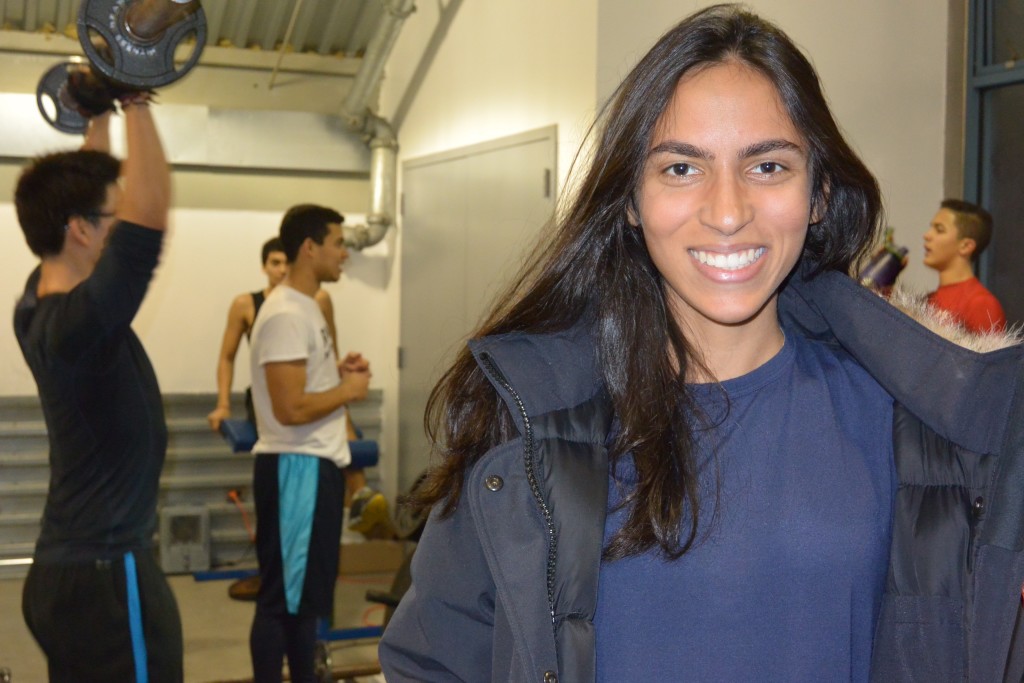
It might be surprising to learn, but weightlifting doesn’t just build muscle – it creates flexibility and a range of motion. It plays a huge part of the rowing stroke. As explained by Sasha, in order to get full length on a stroke, as the blade goes through the water and a rower comes to the catch, flexibility is needed in the hamstrings, hips, and lower back. It essentially leads to more speed. When rowers are flexible, they will have longer and stronger strokes, ultimately moving the boat more with every stroke.
Although weightlifting practices vary for each team, all athletes target their backs, hamstrings, and quads. The girl’s team, a fierce but peaceful group, opts to warm up with yoga.
ROWING TANKS
“Ready, catch! Release!” Row New York coach, Patrick Fernbach, is making his way around two big tanks of water at Sarah Lawrence College. In each tank is a wooden imitation rowing shell with four of the Queens novice girls. For many of them, holding an oar and making contact with the water is still a new feeling.
Patrick reminds the girls, “think of good posture, sitting up nice and tall. Arms out straight.” Indoor rowing tanks allow the girls to take everything they’ve been learning on the ergs this fall and winter and apply it to an experience much more similar to actually being on a body of water. There is emphasis on focus, which can be seen on an athlete’s concentrated face. When Patrick says “catch!,” eight oars simultaneously slice into the water, the sound caught echoing around the room.
During the winter, the major focus is fitness. Therefore, the tanks are the one opportunity for athletes to get back in touch with an oar. They allow coaches to assess how skilled the teams are with their blade-work in the water. Due to their stability, the tanks provide the perfect opportunity for students to build proper muscle memory and a range of motion. Students practice twisting out to their sides and staying in strong positions, which is incredibly applicable to being in a real boat.
All of our athletes go to the tanks for the technical benefits, which the girls will surely appreciate during racing season. However, when Patrick asks them “how was it?,” in unison the response is, “so much fun!” – a testament to how exciting and unique that tank experience is.
With the spring racing season right around the corner, student-athletes will soon be able to showcase what they earned over the winter. From gaining confidence with swimming, to strength and flexibility, and the technique to maneuver an oar, the teams are ready. The next time you think winter is for hibernating, just remember that hard work now, pays off in the spring!


